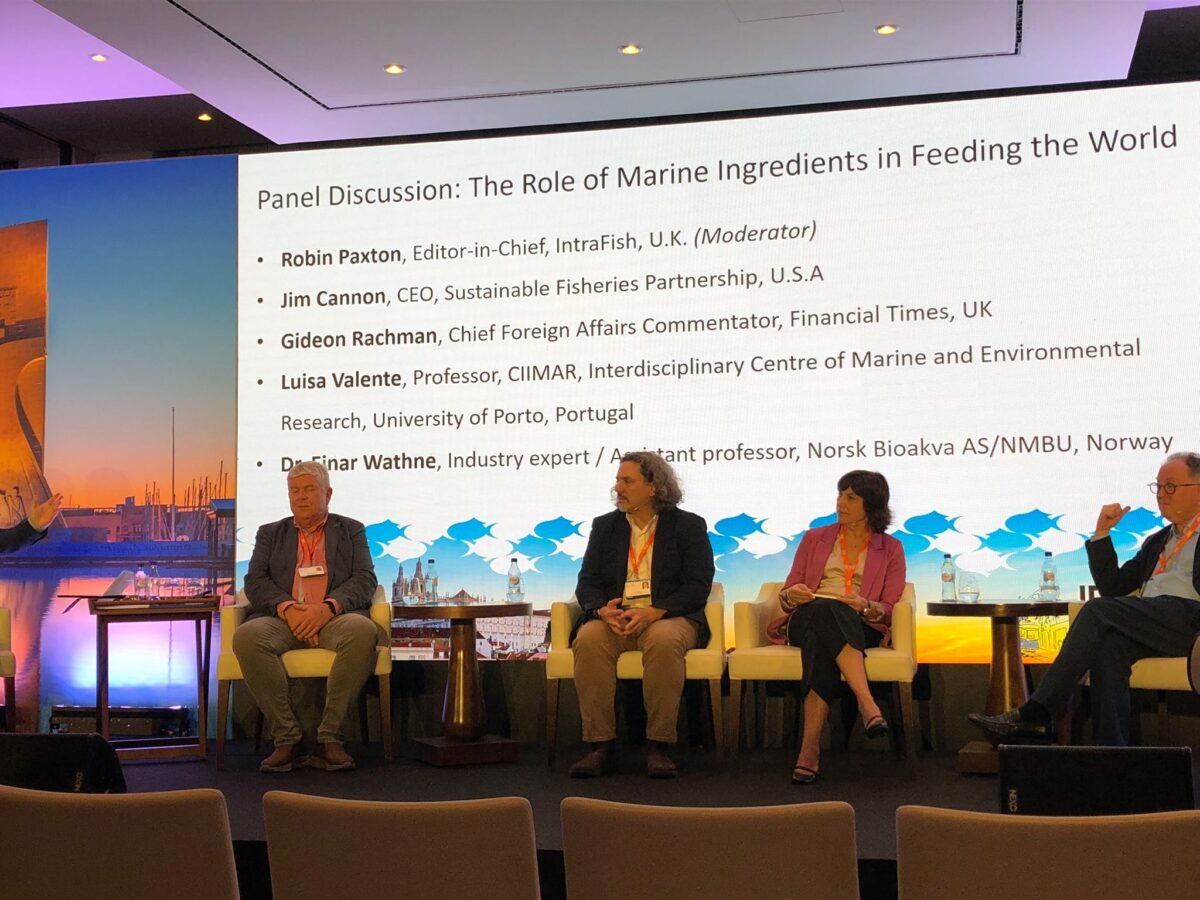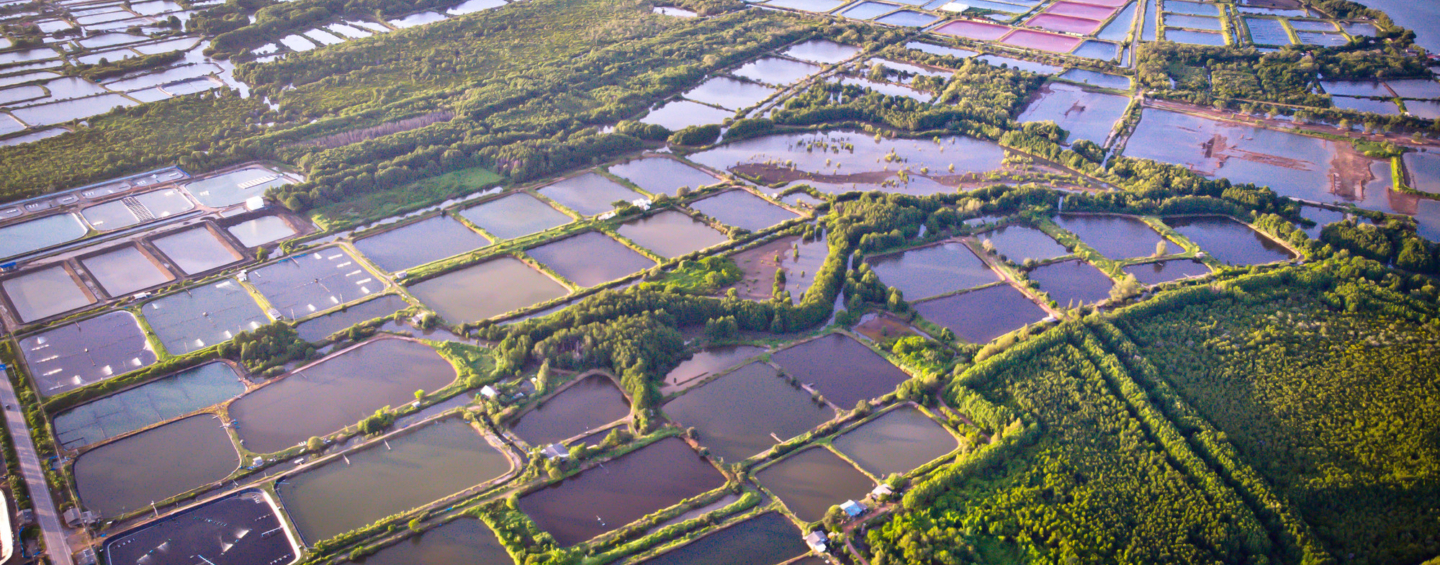Aquaculture initiatives here at SFP are gaining momentum, as our ongoing landscape-level project in India and our ready-to-use Feed Solutions Toolkit move into their promotional, or “roadshow,” phase. We’re excited to share these developments with the world, to enhance their impact. Stay tuned for updates and read on to learn more.
Making my pitch at the Global Shrimp Forum
This journey began back at Seafood Expo Global in Barcelona in April, but really kicked up a gear at the Global Shrimp Forum in Utrecht, the Netherlands, in September. At the Forum, I gave my first-ever pitch for our work, introducing attendees to our ecosystem aquaculture approach and our efforts to build a foundation for landscape-level improvements in India.
The presentation was like stepping into an episode of Shark Tank or Dragon’s Den, complete with audience voting and a countdown clock. The pressure was on. Still, I was able to frame our landscape-level improvement approach under our Promoting Ecosystem Aquaculture initiative, and explain that its ultimate aim is to benefit industry, nature, and people. I also doubled down on the idea that this is a process – one that we are developing and trialing with shrimp production in Andhra Pradesh in India.
Global Markets Deputy Director/Advisory Services Director Mercedes Mendoza, captured this event on video:
I’ll spare you the results of the vote – let’s just say I was one of three pretty evenly matched runners-up! But what mattered was that the subsequent breakout session attracted lots of social experts and attention from implementers of aquaculture improvement projects (AIPs).
Their top recommendations? Engage with diverse stakeholders, be adaptive, and align with local priorities and structures.
Debuting the Toolkit at the IFFO conference
Next on the agenda was the Marine Ingredients Organization (IFFO) annual conference in Lisbon, Portugal, in October, where our Feed Solutions Toolkit made its official debut. All eyes were on SFP Chief Executive Officer Jim Cannon during the opening session, as he took full advantage of the longest stage I have ever seen at a conference to engage with the audience for his presentation on “Future-proofing feed to protect nature and promote climate change resilience.” Jim also introduced the Toolkit during his talk. Thanks, Jim!
His presentation helped create a bit of a buzz and drew delegates to a later introduction and real-life demo of the Toolkit as part of a conference side event on the third and final day, “How can fisheries management and viable value chains contribute to improved food security.” This session provided a perfect bookend to the conference, reinforcing the themes presented earlier during Jim’s opening session.
Tackling the challenges of feed production
At the conference, Professor Luisa Valente from the University of Porto shared a compelling statistic: Feed accounts for a staggering 80 percent of aquaculture’s carbon footprint.
I often encounter this striking statistic, which is typically paired with the reality that feed also drives many significant environmental impacts, such as deforestation and land conversion. Therefore, I took a moment to remind the audience – and myself – that we must not become over-familiar and therefore desensitized to this pressing issue and that, fortunately, there is an unofficial coalition of organizations and tools that are actively addressing these challenges and ready to lend their support.
This is precisely what the Feed Solutions Toolkit represents. Within its searchable web pages, the Toolkit contains a range of tools and organizations that can help assess risks concerning fishery, terrestrial, and novel ingredients; drive improvements; and provide assurance of low-risk feed ingredients. It was great to see so much interest from attendees at the IFFO conference and so many phones held aloft as I showed the Toolkit’s QR code on the screen.
Check out the Toolkit yourself here – and let us know what you think!

JIm Cannon, second from left, presenting as part of a panel discussion at the 2024 IFFO Annual Conference.

